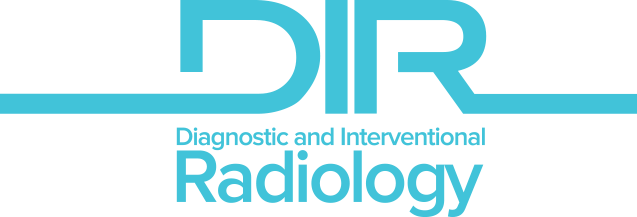Dear Editor,
We read with great interest the study by Elek et al.1 This pioneering study deserves recognition for moving beyond natural language applications to directly evaluate image-based interpretation, thereby opening an important avenue for translational research in abdominal radiology.
The authors demonstrated that Bing ChatGPT-4 performed well in basic categorization, correctly identifying modality, anatomical region, and imaging plane. However, performance declined significantly when greater domain-specific expertise was required, such as differentiating magnetic resonance imaging pulse sequences, characterizing contrast enhancement, or recognizing pathology. These findings underscore the gap between surface-level pattern recognition and the deeper integrative reasoning central to radiologic diagnosis. Unlike convolutional neural networks or vision transformers trained on pixel-level radiology data, large language models (LLMs) are fundamentally language-based systems. Their image analysis relies on multimodal encoders that generate coarse visual embeddings, which are inadequate for detecting subtle grayscale variations, texture details, or multiparametric signal patterns. Diagnostic interpretation also requires the dynamic assessment of multiphase acquisitions, volumetric navigation across planes, and the integration of clinical metadata—all beyond the scope of single-image input models.
Considering that the authors did not employ radiology-specific pretraining, the favorable results demonstrated by relatively older models may reflect selection bias or stereotypical features (e.g., modality-specific appearances, anatomical landmarks) rather than genuine interpretive capacity. Prior exposure to similar images during training could also explain the model’s apparent accuracy. Moreover, due to the black box nature of these systems, performance in image interpretation may vary across contexts. Comparing outcomes with the interpretations of radiologists with differing levels of experience would further clarify the true clinical relevance of such models.
The model’s restriction to single-image inputs represents a major limitation, since radiologists rarely interpret isolated slices. Accurate diagnosis typically requires the analysis of image series across multiple planes and sequences. Future model development should therefore focus on sequential or volumetric image ingestion, approximating human workflow more closely.
Another important point is the absence of structured prompts. While this absence provided a fair “out-of-the-box, browser-based” evaluation, it may have underestimated the model’s performance. Prior studies show that carefully designed prompts and stepwise reasoning frameworks can markedly enhance accuracy.2-4 Collaborative efforts between artifical intelligence (AI) scientists and radiologists to develop structured, validated prompt libraries for specific diagnostic tasks may represent a key step forward.
Similarly, while the exclusion of patient history was methodologically justified to isolate image interpretation, it created a synthetic setting that diverges from clinical reality. Radiologists nearly always integrate clinical data into diagnostic reasoning. Excluding such information may underestimate the potential of LLMs, which are fundamentally language-processing systems. Ultimately, an effective AI assistant must synthesize both imaging and clinical data.
In conclusion, Elek et al.1 provide valuable early evidence on the opportunities and limitations of LLMs in abdominal radiology. Their study initiates a critical discussion and highlights important directions for future studies in this emerging field.



